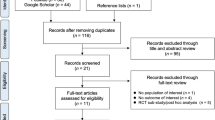Abstract
Osteoporosis and fractures that occur as a result of this condition pose a huge public health problem to society and result in morbidity and mortality to individuals. Because osteoporosis is often a result of aging, many people are not aware that therapies exist to reduce the risk of fracture. Until recently, the most common therapies used to treat osteoporosis, the oral bisphosphonates, had an inconvenient and cumbersome mode of administration. Within the last 4 years, two new parenteral antiresorptive drugs to treat osteoporosis were approved by the US Food and Drug Administration. As treatment of osteoporosis may extend for many years, the collection of long-term efficacy and safety data is warranted. This paper discusses data from the extension trials of denosumab and zoledronic acid.

Similar content being viewed by others
References
Papers of particular interest, published recently, have been highlighted as: • Of importance •• Of major importance
Cramer JA, Gold DT, Silverman SL, Lewiecki EM. A systematic review of persistence and compliance with bisphosphonates for osteoporosis. Osteoporos Int. 2007;18:1023–31.
Harris ST, Siris E, Abbott T, et al. Reduced osteoporotic fracture risk in patients’ adherence to bisphosphonate therapy; Program & Abstracts of The Endocrine Society’s 87th Annual Meeting; 4–7 June 2005; 2005. pp. 3–382.
Cummings SR, San Martin J, McClung MR, et al. Denosumab for prevention of fractures in postmenopausal women with osteoporosis. N Engl J Med. 2009;361:756–65.
Black DM, Delmas PD, Eastell R, et al. Once yearly zoledronic acid for the treatment of postmenopausal osteoporosis. N Engl J Med. 2007;356:1809–22.
•• Papapoulos S, Man Z, Mellstrom D et al. Five-Year denosumab treatment of postmenopausal women with osteoporosis: results from the first two years of the FREEDOM trial extension, Osteoporos Int, abstract OC26, ECCEO, Valencia, Spain, March 25, 2011. This is the most recent data presented from the FREEDOM trial extension.
• Seeman E, Libarati C, Austin M et al. The transitory increase in PTH following denosumab administration is associated with reduced intracortical porosity: a distinctive attribute of denosumab therapy, Annual Meeting of the American Society of Bone and Mineral Research, abstract 1064, San Diego CA. September 17, 2011. This is the most plausible explanation for the continued increase in BMD during continuation of denosumab therapy.
Lewiecki EM, Miller PD, McClung MR, et al. Two-year treatment with denosumab (AMH 162) in a randomized phase 2 study of postmenopausal women with low bone mineral density. J Bone Miner Res. 2007;22:1832–41.
Miller PC, Bolognese MA, Lewiecki EM et al. Effect of denosumab on bone density and turnover in postmenopausal women with low bone mass after long-term continued, discontinued, and restarting of therapy: a randomized blinded phase 2 clinical trial. Bone. 2008;43:222–29.
• Miller PD, Wagman RB, Peacock M et al. Effect of denosumab on bone mineral density and biochemical markers of bone turnover: six-year results of a phase 2 clinical trial, J Clin Endocrinol Metab, 2011;96(2):394–402. This is the most recent peer-reviewed publication of denosumab data.
•• McClung MR, Lewiecki EM, Bolognese MA. Effects of denosumab on bone mineral density and biochemical markers of bone turnover: 8-year results of a phase 2 clinical trial, Annual Meeting of the American Society of Bone Mineral and Research, abstract 1061, San Diego CA, September17, 2011. This is the most recent publication of denosumab long-term safety data.
•• Black D, Reid I, Cauley J, et al. The effect of 3 versus 6 years of zoledronic acid treatment in osteoporosis: a randomized extension to the HORIZON-Pivotal Fracture Trial (PFT), Annual Meeting of the American Society of Bone Mineral and Research, Abstract 1070 and oral presentation, Toronto, Canada, October 16, 2010. This is the only presentation of ZOL extension trial data not yet published in peer-reviewed literature.
• U.S. Food and Drug Administration: Reclast (zoledronic acid): Drug Safety Communication-New Contraindication and Updated Warning on Kidney Impairment. Available at http://www.fda.gov/Safety/MedWatch/SafetyInformation/SafetyAlertsforHumanMedicalProducts/ucm270464.htm. Posted September 1, 2011. This is a reminder of the potential renal toxicity of ZOL in at-risk patients.
Reclast Prescribing Information. East Hanover, NJ: Novartis Pharmaceutical Corp; Jan. 2010.
Disclosure
Conflicts of interest: R.K. Dore: acts as a consultant and is on the Speakers’ Bureau for both Amgen and Novartis, the makers of denosumab and ZOL, respectively.
Author information
Authors and Affiliations
Corresponding author
Rights and permissions
About this article
Cite this article
Dore, R.K. Data from Extension Trials: Denosumab and Zoledronic Acid. Curr Osteoporos Rep 10, 16–21 (2012). https://doi.org/10.1007/s11914-011-0082-z
Published:
Issue Date:
DOI: https://doi.org/10.1007/s11914-011-0082-z




